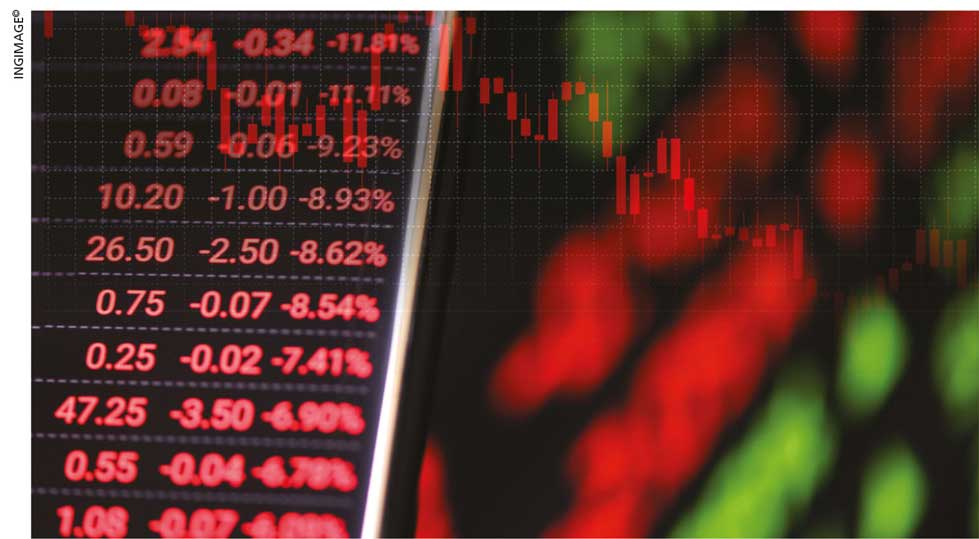INFLATIONARY MILIEU

DANGERS OF PRINTING MONEY
Quick fixes to save economies will have long-term impacts – Janaka Perera

The COVID-19 pandemic has undoubtedly had a negative impact on many economies worldwide although the degree of damage may not be the same everywhere. In recent times, inflation has become a major economic concern, causing certain governments to focus on printing money to prop up their economies.
Before he resigned as a state minister to accept a posting as the Governor of the Central Bank of Sri Lanka, Nivard Cabraal said in a TV interview that there was no relationship between printing money and depreciation of the rupee in foreign currency markets.
In another television broadcast on 9 February, veteran politician D. E. W. Gunasekera noted that even the US is facing a shortage of dollars.
It is generally understood that money is a representation of what a nation as a whole is worth; and printing new money means that despite people receiving more cash to hand, it’s of less value.
Printing more money doesn’t boost economic output; it only increases the amount of cash circulating in the economy. If more money is printed, consumers are able to purchase more goods; and if sellers still have the same quantum of items in stock, they will respond by increasing prices.
In a basic model, printing money will simply cause inflation.
To better understand the challenges posed by currency in an inflationary milieu, it would be enlightening to focus on debates in the US over monetary theories.
Milton Friedman, whose economic theories shaped the US political debate for five decades, stated in a 1970 lecture that “inflation is always and everywhere a monetary phenomenon.”
In other words, he believed that while rising prices for a single item might be caused by a spike in demand and/or a depleted supply, inflation is primarily driven by changes in the amount of readily available money.
Printing more money without a corresponding increase in economic output necessarily reduces a currency’s value with prices rising in response to such action. Friedman’s great aversion was to printing money without any basis.
The official term for currency created with no clear link to a valuable commodity is ‘fiat money,’ which is essentially liquidity by decree. As American financial consultant Harvey Bezozi says, in essence, the modern US Dollar is a ‘dollar’ only because the federal government says so.
And the value of fiat money is solely determined by the balance (or imbalance) of supply and demand. US Dollars will have value only so long as Americans, foreign governments and international banks all recognise them as being valuable – and desire more of the same.
But for the United States of America – with or without a gold standard – the dollar remains a preeminent global reserve currency, meaning that many countries maintain a substantial portion of their monetary reserves in US Dollars. Among many complex factors, the sheer size of the American economy is considered a reasonable guarantee of its currency’s enduring value.
Herein lies a huge advantage that the US has over nations with smaller economies and is key to the prevalence of hyperinflation among struggling countries such as Sri Lanka.
For a nation whose currency does not serve as a global reserve, expanding the money supply swiftly lowers its currency’s value – because supply massively outpaces global demand. As the money loses its value, domestic prices must climb to compensate for it – and a vicious cycle rapidly emerges.
In the end, the success of any decree (monetary or otherwise) depends on the power of the issuer of the fiat. Even in these shaky times, America’s economic power remains extensive. Yet, this does not mean the US can simply churn out new dollar notes by the trillions without there being consequences.
Devaluation and inflation will be the result; and in this sense, Friedman’s warning still rings true… at least, to some degree.
Last December, leading US stockbroker Peter Schiff issued a stark warning about what lies ahead for the global economy if inflation can’t be countered. He told Yahoo Finance that the United States’ inflation problem had become so dire there was not much that could be done to fix it.
“But they can stop making the problem worse. They can stop printing money right now,” he said. While ceasing to print money would solve the problem in theory at least, it wasn’t a likely option – for obvious reasons.
Schiff added: “They won’t do that of course, because it would create the worst financial crisis since 2008. The problem is [that] doing the right thing causes incredible economic pain in the short run; but doing the wrong thing causes even more economic pain in the long run.”
Finally, by digging a little deeper into Friedman’s teachings, one unearths a principle that will never lose its relevance. Beyond all questions of theory, his own included, Friedman consistently argued for an approach where economic policies are judged by results rather than their intentions.




Leave a comment